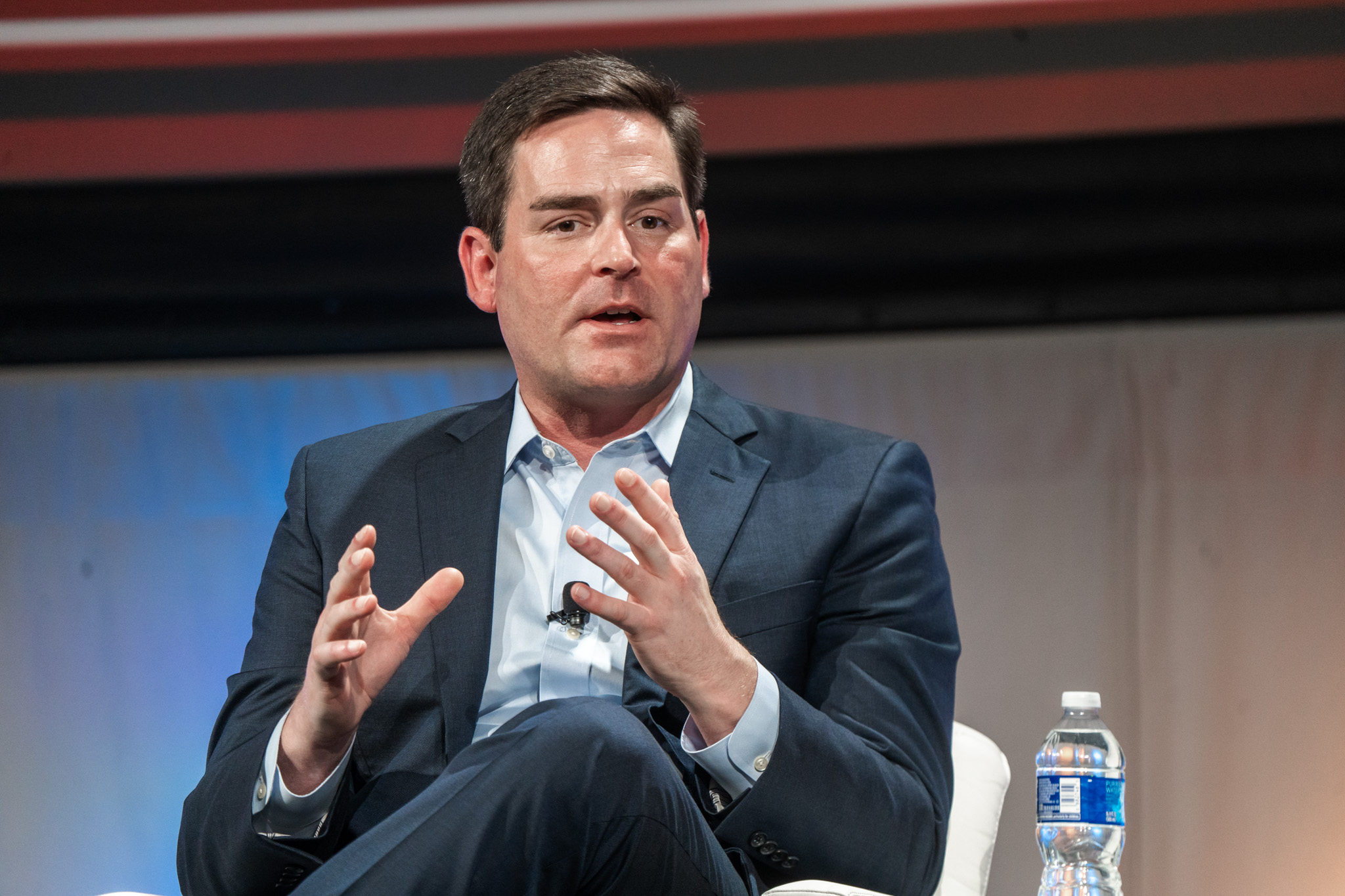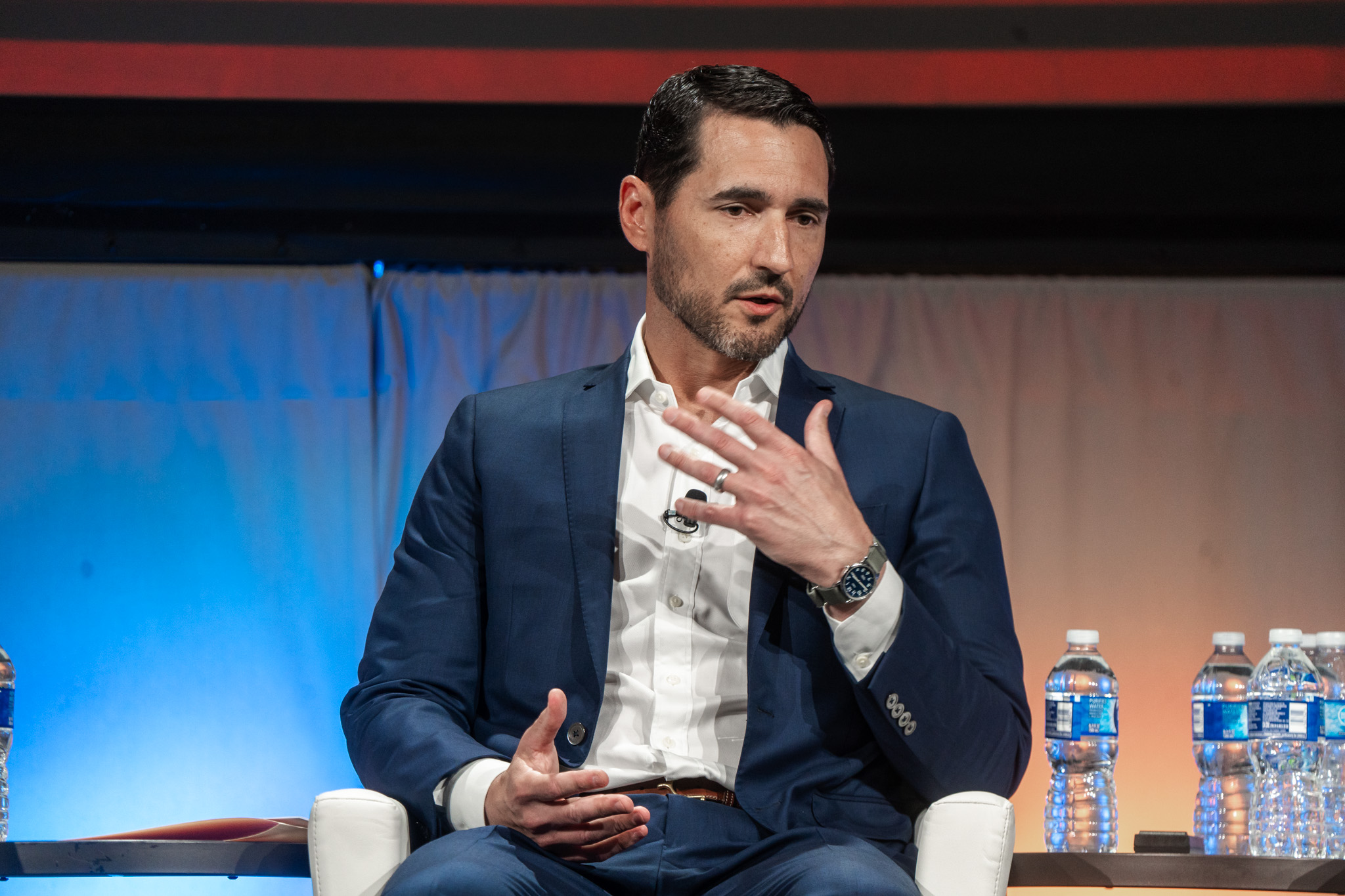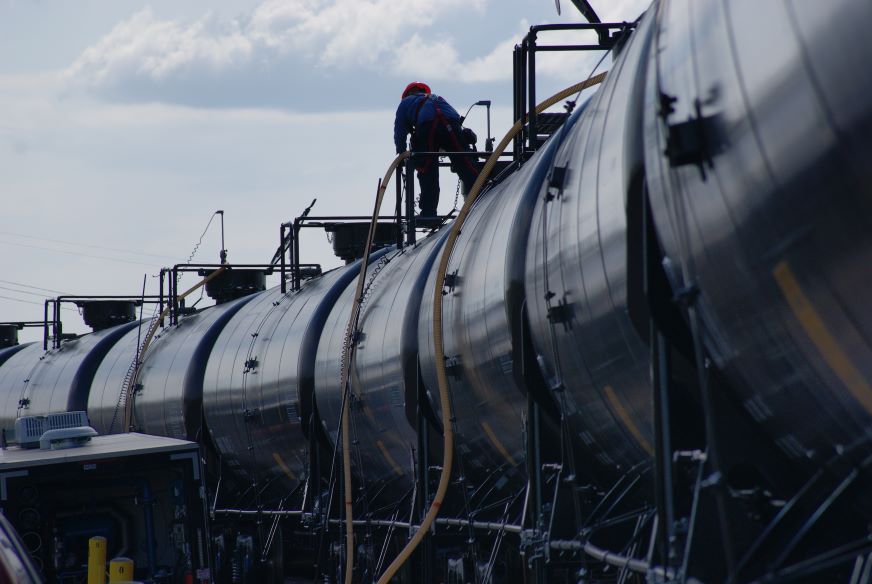In May, Exxon Mobil completed its record-breaking $60 billion buyout of Pioneer Natural Resources in the Permian Basin. In the same month, Hess Corp. shareholders approved the company’s $53 billion sale to Chevron.
The deals draw a curtain on some of the M&A frenzy in 2023, one of the most active seasons in E&P history. At the same time, the midstream sector saw the curtain opening on an intensifying M&A market.
In all of 2023, the midstream market saw about $21.9 billion in M&A deals, according to energy research firm Enverus. Through first-quarter 2024, the midstream sector had already reached $12.5 billion, and more deals followed in the second quarter, primarily in the Permian Basin.
In May alone, Kinetik announced a $765 million deal to purchase Durango; Phillips 66 struck a deal to buy Pinnacle Midstream for $550 million; and Energy Transfer bought WTG Midstream for $3.2 billion.
Industry veterans say it’s not surprising. Increased M&A activity usually hits the midstream sector about six months after it hits E&Ps, and it’s typical that many of the major deals have been focused on the Permian, the hottest oil patch in the nation.
This time around, however, the field is changing.

The consolidation trend that enveloped E&Ps over the last four years has been mirrored in the midstream market. Times have generally been good. Strong demand for crude and NGL, and expected growth in the natural gas market, has meant that midstream services are in high demand.
However, the number of major players on the field has been shrinking, and network growth has largely flattened. That’s changed the way M&A deals happen, analysts say.
“Is the world expanding?” Gregory Davis, a partner with EIV Capital, asked during a midstream panel session at Hart Energy’s Super DUG conference in May. “No, I think it’s shrinking.”
Last man standing
In 2020, Forbes ran an article by investment adviser Roger Conrad with the headline “Best Midstream Energy Companies: Safe And Worth Buying.”
The list of 10 included a lot of today’s heavy hitters in the sector: Enterprise Products Partners, Kinder Morgan, Plains All American and Enbridge.
However, three of Conrad’s top 10—Magellan Midstream Partners, Crestwood Equity Partners and Enable Midstream Partners—no longer exist.
Energy Transfer, one of the M&A market’s more aggressive players, bought Enable in December 2021 and Crestwood for $7.1 billion in August 2023. ONEOK, which did not make Conrad’s 2020 list, bought Magellan in September 2023.
“Over the last 10 years, I think we’ve seen a 60% reduction in the number of publicly traded companies,” said Brad Iles, CEO of Brazos Midstream, during the Super DUG panel. The remaining public companies are still interested in M&A but have become more selective about what they buy, he said.

Buyers’ market
One analyst said large firms are looking to buy but have shifted their priorities on the assets they think would specifically help them.
“What is driving buying by large midstream companies is the slowdown in development opportunities,” wrote Hinds Howard, portfolio manager at CBRE, in an email to Hart Energy. “With production growth less robust these days, there is less need to build new infrastructure, so buyers are deploying capital into bolt-on acquisitions to shore up their existing footprints of assets.”
Organic growth, meanwhile, has been stagnant. The growth capex, not including M&A, for the major midstream firms declined 30% from 2019 to 2020, according to East Daley Analytics.
Howard said the resulting market currently favors the buyers. Smaller firms have fewer potential buyers and funding options, and generally have to deal with investors looking for a return. The prices for the firms, therefore, face some downward pressure.
“Sellers in midstream are mostly private equity-backed companies, so one of the things driving M&A is the need for those private equity owners to achieve an exit on their investment,” he said. “Exit options are more limited in midstream these days, because there is no viable (master limited partnership) IPO market to work in tandem with a private sale process, and because there are fewer midstream companies remaining to buy assets, limiting competition in bid situations.”
A master limited partnership (MLP) is a business venture in the form of a publicly traded limited partnership. It combines the tax benefits of a private partnership with the liquidity of a publicly traded company. MLPs largely backed out of the midstream market in the 2010s after they were hit by a period of low commodity prices and government policy changes that took away their advantages.
Meanwhile, most large companies have spent the last few fiscal years paying off debt and, therefore, have flexibility with their financial options.
“(Public companies) also have lower leverage and are able to make acquisitions without disrupting their capital allocation situations,” Howard said. “So, lower multiples make M&A a reasonable allocation of capital as a means to grow their businesses, especially with synergies.”
It’s not a pressure-free situation for the large companies, however. To keep up with the other public companies on the market, firms need to grow their footprint and diversify their operations.
“Building scale and having the ability to offer integrated solutions are important factors as well,” Howard said. “I would expect these bolt-on acquisitions continue and assets consolidate into even fewer larger players over time.”
Scaling up and verticality
When Energy Transfer bought WTG in May, Ajay Bakshani, East Daley Analytics director of midstream equity, noted it was “the end of an era.”
The last large-scale private midstream company in the Permian Basin agreed to a $3.25 billion deal. WTG facilities touch 25 counties in West Texas, include more than 1 Bcf/d of natural gas processing capacity and have more than 10 rigs operating in the system.
However, the purchase offered ET more than the chance to expand its Permian network. WTG midstream offered eight online natural gas processing plants and 150,000 bbl/d of NGL processing capacity.
When Phillips 66 bought Pinnacle Midstream, the deal included the 220 MMcf/d Dos Picos natural gas processing plant, an asset that “integrates well with into Phillip 66’s existing downstream infrastructure.”

Kinetik’s purchase of Durango allowed the company to strategically extend its Delaware Basin reach into New Mexico.
“One of the main drivers (of M&A) is the need for scale and vertical integration,” Bakshani said. “KNTK’s acquisition of Durango extends it further into New Mexico, making it one of the largest G&Ps [gathering and processing] in that western portion of the Delaware. PSX and ET’s acquisitions reflect the strategy of vertical integration—scooping up Permian G&Ps to drive downstream NGL volumes.”
Vertical midstream purchases have been a major mover for M&A activity this year. Many of the companies buying up midstream operators are from outside the sector.
Sunoco, a Dallas-based gas station company, bought New Star Energy, one of the largest independent liquids terminal and pipeline operators in the U.S., for $7.3 billion in January. The largest natural gas producer in the U.S., EQT, is in the process of buying its old midstream spinoff Equitrans for $14.13 billion.
E&P Matador announced the purchase of Ameredev II for $ 1.9 billion in June. The deal included Piñon Midstream, which had just announced a project to expand its Dark Horse amine treating facility in New Mexico.
The sharks and fishes
Bakshani said there are still plenty of midstream targets available and several companies looking to buy.

East Daley considers Enterprise, Targa Resources, Williams Cos. and Plains All American Pipeline, along with the typically aggressive Energy Transfer, as the companies most likely to consider acquisition.
The companies have large asset bases that can easily add and benefit from bolt-on acquisitions, and are currently in a financial position with positive free cash flow and low leverage that allows them to make a move. (Kinder Morgan has leverage at 4X but may still be looking to buy, Bakshani said.)
Where the companies are looking to buy depends on their immediate needs, though the most active midstream sector of the country will probably be the most active shale basin in the country—the Permian.
“The areas of production activity and growth will continue to be the primary focus areas,” Howard said.
Bakshani said all the attention on the Permian may drive some companies to look elsewhere for bargains.
“The Permian has been hot and is expected to stay hot, but those assets will sell at a premium, as we have seen,” he said. “We definitely expect more privates to get scooped up as well. WTG was the largest private G&P (gathering and processing) operator, but there’s still others remaining (Brazos, Canes Midstream, Salt Creek Midstream to name a few).”
The Brazos network consists primarily of natural gas pipelines in the Delaware and Midland basins, as well as a gas processing plant. Canes operates natural gas, crude and NGL pipelines in the Midland Basin and has five plants, according to the company’s website. Salt Creek has more than 800 miles of crude, natural gas and NGL pipelines in the Delaware Basin, along with a gas processing facility.
During the Super DUG discussion, Iles said Brazos focuses on building a system his company is satisfied with in the long term.
“How we think about building a business at Brazos is, we want to build a business that we could hold forever,” Iles said. “And we believe that if we can build a business like that, those are the types of business that are attractive. Somebody will want to own a business like that.”
Along with a quality build, Iles said midstreamers could also use a key resource, information from their suppliers.
“A lot of the M&A activity that we’ve seen in the upstream world seems to be very driven by inventory, and as a midstream guy, [midstream companies] don’t always have a really transparent view as to what inventory looks like,” he said. “We traditionally aren’t able to get that level of information.”
The lack of transparency between a supplier and midstream company can make future M&A deals more difficult.
“I’m not sure that all midstreamers truly understand the lack of inventory they have on their system,” he said. “My hope is that we’re going to see some publicly traded companies begin to question, ‘What is our true inventory here?’”
Outside the Permian
With the exception of EQT’s purchase of its own spinoff, Equitrans (ETRN), midstream M&A activity outside of the Permian has not been that active, Howard said.
“The big players in the Marcellus have their asset bases, and there doesn’t seem like as much room for M&A as a means to break into that market,” Howard said. “It is conceivable that EQT sells off some of the old ETRN assets, and it is conceivable that someday Marathon Petroleum rethinks its ownership of the dominant processing business MPLX holds, but there are just fewer players with larger market share in that region, so there are fewer small private players left.”

Other basins have some emerging opportunities, Bakshani said.
Production of natural gas has been rising in the Eagle Ford in South Texas. In April, TotalEnergies announced it was increasing its natural gas production capacity by 50 MMcf/d in the play to strengthen its position in the U.S. LNG value chain.
The attractiveness of shale plays near the Gulf Coast, where the majority of U.S. LNG processing and export take place, will increase the value of midstream companies operating in those areas, such as the Eagle Ford and the Haynesville, Bakshani said.
Howard pointed out that midstream operators with tie-ins to LNG facilities along the Gulf Coast are also attractive.
Basins in the upper Rockies have also seen some activity.
“The Anadarko and D-J (Denver-Julesburg)/Rockies also have potential,” Bakshani said. “We see Western Midstream and EnLink as attractive targets, and they have strong G&P positions in these basins. They could also be a consolidator and try to create a more dominant position by scooping up privates in those areas, as WES did at the end of last year with its acquisition of Meritage (Midstream Services).”

Moving forward
While opportunities remain, the future M&A activity in midstream will likely take place between parties that will take a less compromising look at the potential deals, Davis said.
“Consolidation should create opportunities to shed non-core assets,” he said. “Midstream is a little bit different,” however, as the big public companies tend to be very reluctant to let go of their assets.
With fewer companies overall, that could mean that fewer assets will be on the market. There are still plenty of opportunities, however, for companies that understand the business and are willing to take on challenges.
“So, there aren’t as many folks out there competing for assets as there were 10 years ago,” Davis said. “The opportunity set is, you really have to have a clear vision of what you’re going to do. At the end of the day, I think the service level we provide is what will ultimately differentiate us.”
Recommended Reading
Baker Hughes Wins LNG Technology Orders for Venture Global
2025-01-30 - Baker Hughes Co. also signed a multiyear services agreement to support the first two phases of Venture Global’s Plaquemines LNG project in Louisiana.
LNG Canada Receives Cooling Cargo, Signals Project Start-Up
2025-04-03 - LNG Canada expects to start exporting LNG by the middle of 2025.
Excelerate Energy, Petrovietnam Gas Sign MOU to Secure US LNG
2025-03-19 - Excelerate Energy Inc. and Petrovietnam Gas Joint Stock Corp. are collaborating to secure LNG from the U.S. as early as 2026.
NextDecade, Aramco Agree to 20-Yr LNG Offtake Deal for Rio Grande Train 4
2025-04-08 - Aramco will buy 1.2 mtpa from NextDecade Corp. upon completion of its Rio Grande Train 4 at a price indexed to Henry Hub.
Canadian Government to Fund Portion of Cedar LNG’s $5.96B Development Cost
2025-03-24 - The Government of Canada has pledged to contribute up to $200 million to help the Haisla Nation and Pembina Pipeline Corp. develop the $5.96 billion Cedar LNG Project
Comments
Add new comment
This conversation is moderated according to Hart Energy community rules. Please read the rules before joining the discussion. If you’re experiencing any technical problems, please contact our customer care team.






